Posté par Pascale Dubus, le 1 mai 2013;
- Date limite : 24 mai 2013
- Date et lieu du colloque : 27-29 mars 2014, New York,
 For Renaissance Europeans, animal fur was a desirable but complex material. It was a high status commodity, lining (or appearing to line) fine garments. Yet it was also an animal skin, as worn by Adam and Eve after the Fall.The lack or presence of fur, some fifteenth-century humanists claimed, was a key marker of difference between animals and humans. Fur was at once civilised and wild. For Renaissance Europeans, animal fur was a desirable but complex material. It was a high status commodity, lining (or appearing to line) fine garments. Yet it was also an animal skin, as worn by Adam and Eve after the Fall.The lack or presence of fur, some fifteenth-century humanists claimed, was a key marker of difference between animals and humans. Fur was at once civilised and wild.
The ability to depict the textures and tactility of fur, such as that covering Castiglione in his portrait by Raphael, or in Dürer’s 1500 self portrait, was a sign of painterly skill, lavished not just on garments but . . . → En lire plus
Posté par Pascale Dubus, le 30 avril 2013;
- Date limite : 30 mai 2013
- Date et lieu du colloque : 27-29 mars 2014, New York
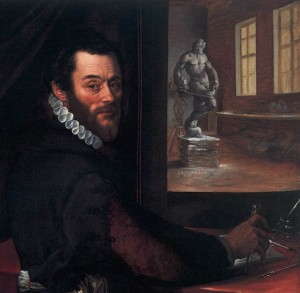 For the panel « Art and its Classes” speakers are invited to explore how social mobility (or lack thereof) influenced patronage, creation and study of art during the Renaissance, and/or address the wider question of elitism in art history. For the panel « Art and its Classes” speakers are invited to explore how social mobility (or lack thereof) influenced patronage, creation and study of art during the Renaissance, and/or address the wider question of elitism in art history.
Topics could include but are not limited to :
· how Giorgio Vasari’s position at court influenced his Lives
· Karel van Mander’s nobility and his Het Schilderboek
· group patronage among the lower and emerging middle classes
· ennobling of artists (Michelangelo, Titian, Giambologna among others)
· social mobility expressed through display at French, English, Italian or . . . → En lire plus
Posté par Damien Bril, le 20 avril 2013;
- Date limite : 15 juillet 2013
- Date et lieu du colloque : février-septembre 2014, Berlin-Munich
Berlin (Germany), 19.-20.2.2014/ Munich (Germany), 25.-26.9.2014 Deadline-CFP: 15 juil. 2013
War Graves, War Cemeteries, and Memorial Shrines as a building task (1914 to 1989) – A Two-Part Colloquium 2014
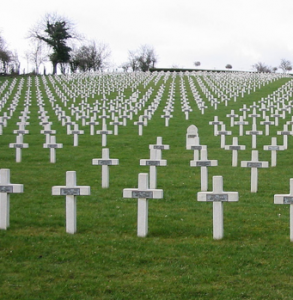 Despite the spadework of scholars such as Meinhold Lurz, Monika Kuberek, Joachim Wolschke-Bulmahn, and Christian Fuhrmeister, the analysis of war graves and soldier cemeteries still is a desideratum in the fields of art history and architectural history. Particularly in reference to the centennial of the events of World War I and the concomitant centenary of the Volksbund Deutsche Kriegsgraeberfuersorge e.V. (German War Graves Commission, founded 1919), a critical reflection on the current state of research is essential. The colloquium will discuss this theme . . . → En lire plus Despite the spadework of scholars such as Meinhold Lurz, Monika Kuberek, Joachim Wolschke-Bulmahn, and Christian Fuhrmeister, the analysis of war graves and soldier cemeteries still is a desideratum in the fields of art history and architectural history. Particularly in reference to the centennial of the events of World War I and the concomitant centenary of the Volksbund Deutsche Kriegsgraeberfuersorge e.V. (German War Graves Commission, founded 1919), a critical reflection on the current state of research is essential. The colloquium will discuss this theme . . . → En lire plus
Posté par Matthieu Lett, le 15 avril 2013;
- Date et lieu du colloque : 3-4 mai 2013, Marseille
Du XVI au XIX siècle le voyage en Italie fut le grand rite culturel du monde occidental. Dès le XV siècle les artistes en avaient ouvert la voie. Jean Fouquet et Van der Weyden en laissèrent des traces. Montaigne en laissa des souvenirs, Germaine de Staël un roman et Stendhal un syndrome. Louis XIV en fit une institution, l’Académie de France à Rome, et Napoléon l’installa dans la Villa Médicis.
Au XVIII siècle, Pompéi, Herculanum et Paestum émergent du passé. Rome est le centre des arts où s’élaborent les nouvelles théories. Winckelmann y découvre l’art grec et invente l’histoire de l’art. Goethe en tête, l’Europe s’y précipite et l’aristocratie britannique fait du voyage le terme obligé de l’éducation de sa jeunesse, qu’en vieux français elle nomme le Grand Tour. C’est . . . → En lire plus
Posté par CES20, le 15 avril 2013;
- Date de la journée d'étude : 20 avril 2013, Paris, INHA
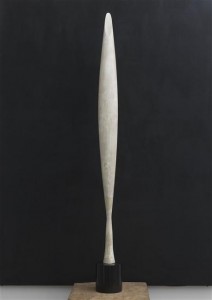 Au regard de l’histoire de l’art, la sculpture fut l’objet de nombreux scandales au cours des deux derniers siècles. De La Danse de Carpeaux, dont la nudité du groupe défraya la chronique, à l’irruption des Colonnes de Buren dans l’environnement classique du Palais Royal, en passant par le Balzac de Rodin ou l’Oiseau dans l’Espace de Bancusi, ces oeuvres s’ancrent dans l’histoire aussi par les scandales qu’elles ont pu susciter. Au regard de l’histoire de l’art, la sculpture fut l’objet de nombreux scandales au cours des deux derniers siècles. De La Danse de Carpeaux, dont la nudité du groupe défraya la chronique, à l’irruption des Colonnes de Buren dans l’environnement classique du Palais Royal, en passant par le Balzac de Rodin ou l’Oiseau dans l’Espace de Bancusi, ces oeuvres s’ancrent dans l’histoire aussi par les scandales qu’elles ont pu susciter.
A quel moment peut-on parler de scandale ? Pourquoi la sculpture est-elle sujette à de vives réactions ? Quelles sont les origines des violents débats ou des actes de vandalisme délibérés ? Comment définir le scandale dans la réception de . . . → En lire plus
Posté par Michele Tomasi, le 15 avril 2013;
- Date et lieu du colloque : 27-28 mars 2014, Lausanne
- Date limite : 31 mai 2013
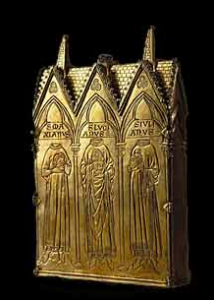 La Section d’histoire de l’art de l’Université de Lausanne, en collaboration avec le Département des objets d’art du musée du Louvre, organise, pour les 27-28 mars 2014, un colloque international intitulé « Orfèvrerie gothique en Europe : production et réception ». La Section d’histoire de l’art de l’Université de Lausanne, en collaboration avec le Département des objets d’art du musée du Louvre, organise, pour les 27-28 mars 2014, un colloque international intitulé « Orfèvrerie gothique en Europe : production et réception ».
Cette rencontre se propose de multiples objectifs. D’une part, le désir des organisateurs est de favoriser le dialogue et l’échange dans un domaine où les occasions de discussion sont moins fréquentes que pour d’autres branches de l’histoire de l’art. Afin de permettre de confronter les méthodes, les intérêts et les matériaux, nous souhaiterions réunir à Lausanne à la fois des chercheurs travaillant dans les musées ou . . . → En lire plus
Posté par Damien Bril, le 28 mars 2013;
- Date limite : 30 avril 2013
- Date et lieu du colloque : 18-20 septembre 2014, Berlin
Mars and Museum. European Museums during the First World War (working title) International Conference
organised by Bénédicte Savoy (Technische Universität Berlin), Petra Winter (Zentralarchiv der Staatlichen Museen zu Berlin – Preußischer Kulturbesitz), Christina Kott (Centre Marc Bloch Berlin, Université Panthéon-Assas Paris)
Date: September 18, 2014 – September 20, 2014
Location: Technische Universität Berlin, Strasse des 17. Juni 135, 10623 Berlin, and the Museum Hamburger Bahnhof, Invalidenstrasse 50-51, 10557 Berlin
Submission deadline: April 30, 2013
 Today it has almost been forgotten that not only the Second World War but also the First World War constituted a crucial break in the history of European museums. As a matter of fact, the Louvre was . . . → En lire plus Today it has almost been forgotten that not only the Second World War but also the First World War constituted a crucial break in the history of European museums. As a matter of fact, the Louvre was . . . → En lire plus
Posté par Matthieu Lett, le 15 mars 2013;
- Date limite : 15 avril 2013
- Date et lieu du colloque : 16-18 septembre 2013, Wrocław (Pologne)
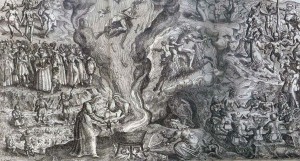 The Academia Europaea Knowledge Hub Wrocław and the University of Wrocław invite young scholars (PhD candidates and postdocs), to take part in the Seminar “Early Modern Print Culture in Central Europe” to be held in Wrocław (Poland) on 16 – 18 September 2013. The Academia Europaea Knowledge Hub Wrocław and the University of Wrocław invite young scholars (PhD candidates and postdocs), to take part in the Seminar “Early Modern Print Culture in Central Europe” to be held in Wrocław (Poland) on 16 – 18 September 2013.
International research has little to say about the development of early modern print culture in Central Europe. Poland for instance is mentioned just once in the latest edition of Elisabeth Eisenstein’s classic study The Printing Revolution in Early Modern Europe (2005), and other parts of Central Europe are not mentioned at all. Nevertheless, the first printing press in Central Europe was established . . . → En lire plus
Posté par Damien Bril, le 11 mars 2013;
- Date limite : 10 mai 2013
- Date et lieu du colloque : 12-15 février 2014, Chicaco
Popularizing Architecture
Historians of German and Central European Art Session CAA 2014 Annual Conference
Chair: Wallis Miller, University of Kentucky
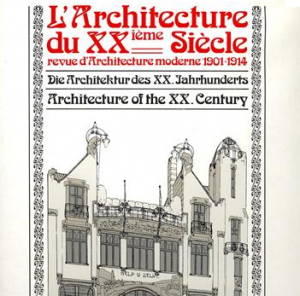 Popularizing Architecture will focus on the dissemination and circulation of new ideas in architecture to non-professional audiences in Germany and Central Europe since the late nineteenth century, when publications that included architecture began to emerge in large numbers. While most of these publications served professional audiences, non-professionals also began to form important audiences for architecture, as they did for other cultural pursuits. Over time, architectural exhibitions, film, radio, television, and the Internet joined newspaper and magazine articles to form a complex media landscape that continues to address a wide range of . . . → En lire plus Popularizing Architecture will focus on the dissemination and circulation of new ideas in architecture to non-professional audiences in Germany and Central Europe since the late nineteenth century, when publications that included architecture began to emerge in large numbers. While most of these publications served professional audiences, non-professionals also began to form important audiences for architecture, as they did for other cultural pursuits. Over time, architectural exhibitions, film, radio, television, and the Internet joined newspaper and magazine articles to form a complex media landscape that continues to address a wide range of . . . → En lire plus
Posté par Damien Bril, le 10 mars 2013;
- Date limite : 1er juin 2013
- Date et lieu du colloque : 19-20 septembre 2013, Oxford
University of Oxford, Kellogg College, September 19 – 20, 2013 Deadline-CFP: 1 juin 2013
Heirs and Spares Conference
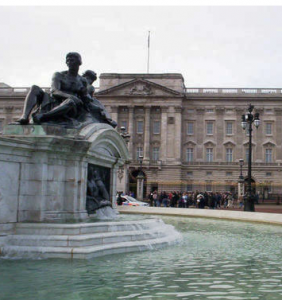 The Society for Court Studies is pleased to announce a two-day conference on the theme of royal ‘heirs and spares’ in early modern Europe, to be held in Oxford on 19-20 September 2013. The focus of the conference will be on heirs to the throne or those who might have been considered ‘extras’, security in case of the death of the heir. Too often the focus of historical research has been on those in the primary seat of power and authority, and rarely on those hovering in the wings, waiting for their big . . . → En lire plus The Society for Court Studies is pleased to announce a two-day conference on the theme of royal ‘heirs and spares’ in early modern Europe, to be held in Oxford on 19-20 September 2013. The focus of the conference will be on heirs to the throne or those who might have been considered ‘extras’, security in case of the death of the heir. Too often the focus of historical research has been on those in the primary seat of power and authority, and rarely on those hovering in the wings, waiting for their big . . . → En lire plus
Posté par Pascale Dubus, le 7 mars 2013;
- Date limite : 20 avril 2013
- Date et lieu du colloque : 30 octobre-2 novembre 2013
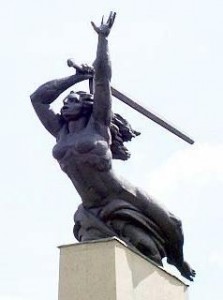 In 1964, Martin Heidegger wrote in his Remarks on Art—Sculpture—Space that the sculptor’s confrontation with their environment disrupted the smooth functioning of its spatial plan or setting. In other words, that sculpture challenged the very physicality of the social order and created a place apart: a place that disturbs the « seamless field over which proceeds the unending circulation of ersatz commodities. » Public monuments have always had a special place in Europe. However, they were never as controversial as following the Second World War during the reconstruction of bombed cities and the urban boom of the fifties and sixties. Heidegger’s analysis formed part of his . . . → En lire plus In 1964, Martin Heidegger wrote in his Remarks on Art—Sculpture—Space that the sculptor’s confrontation with their environment disrupted the smooth functioning of its spatial plan or setting. In other words, that sculpture challenged the very physicality of the social order and created a place apart: a place that disturbs the « seamless field over which proceeds the unending circulation of ersatz commodities. » Public monuments have always had a special place in Europe. However, they were never as controversial as following the Second World War during the reconstruction of bombed cities and the urban boom of the fifties and sixties. Heidegger’s analysis formed part of his . . . → En lire plus
Posté par Damien Bril, le 4 mars 2013;
- Date limite : 15 juin 2013
- Date et lieu du colloque : 28-29 novembre 2013, Budapest
The Research Centre for the Humanities, Institute of Art History, Hungarian Academy of Sciences, in cooperation with CentrArt Association – New Workshop for Art Historians, is organizing an international symposium entitled Ephemeral Architecture in Central-Eastern Europe in the 19th and 20th centuries. This will be held in Budapest, 28-29th November, 2013.
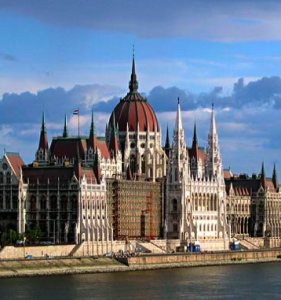 It will focus on Central-Eastern Europe as a fluid geo-political conception and politically unstable territory with constantly shifting borders within the given timespan. Recognizing the growing interest in the latest research on ephemeral architecture, this conference will focus on temporary constructions erected for national and international exhibitions as a means of conveying ideas to an immediate audience. In this perspective . . . → En lire plus It will focus on Central-Eastern Europe as a fluid geo-political conception and politically unstable territory with constantly shifting borders within the given timespan. Recognizing the growing interest in the latest research on ephemeral architecture, this conference will focus on temporary constructions erected for national and international exhibitions as a means of conveying ideas to an immediate audience. In this perspective . . . → En lire plus
Posté par Pascale Dubus, le 19 février 2013;
- Date limite : 12 avril 2013
- Date et lieu : Bologne, juin 2013-juin 2014
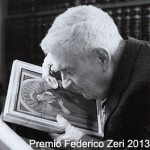
La Fondation Federico Zeri , en collaboration avec la Fondation Dino et Ernesta Santarelli, prévoient l’attribution d’une bourse d’étude pour une recherche sur la section Nature morte de la phototèque Zeri, adossée au projet de catalogage et de valorisation préparées par la Fondation Federico Zeri.
Le lauréat du Prix Federico Zeri 2013 étudiera en particulier la survivance de l’Antique et la représentation de la sculpture dans la peinture de nature morte.
La bourse d’étude s’adresse à un spécialiste de la peinture italienne et européenne du XVI au XVIII siècle, sélectionné sur la base du curriculum présenté et des titres requis.
Informations et constitution du dossier Contact : premiofedericozeri@fastwebnet.it
Posté par Pascale Dubus, le 16 février 2013;
- Date limite : 15 mars 2013
- Date de prise de fonction : 1er mai 2013
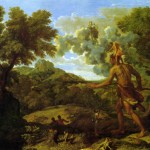 Dans le cadre du programme de recherches EHNE, le Centre André Chastel recrute un(e) post‐doctorant(e) qui sera chargé(e) de l’animation de l’axe 7 du projet : « Traditions nationales, circulations et identités dans l’art européen ». Dans le cadre du programme de recherches EHNE, le Centre André Chastel recrute un(e) post‐doctorant(e) qui sera chargé(e) de l’animation de l’axe 7 du projet : « Traditions nationales, circulations et identités dans l’art européen ».
Ce projet s’attache à définir l’incidence de l’art dans la constitution de l’Europe depuis le Moyen Age jusqu’à nos jours, à travers les notions de tradition et d’acculturation, en définissant les ressorts de la géographie artistique (forces centrifuges, centripètes, interactivités et réciprocités, réseaux) fondés sur la mobilité des hommes, des idées et des objets. Il accorde une place particulière aux processus de patrimonialisation
Le/la candidat(e) sera chargé(e) d’assurer un suivi scientifique et une coordination administrative des . . . → En lire plus
Posté par Damien Bril, le 7 février 2013;
- Date limite : 15 février 2013
- Date et lieu du colloque : 15-16 mars 2013, Prague
Prague, Czech Republis, March 15 – 16, 2013 Deadline-CFP: 15 févr. 2013
Call for Papers for the Panel: Histories and Imaginaries: European Art versus American Art
(As part of the Third Euroacademia Global Conference ‘Europe Inside-Out: Europe and Europeaness Exposed to Plural Observers’, 15 -16 March, Grand Majestic Plaza, Prague, Czech Republic)
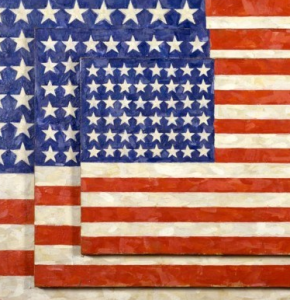 Panel Description: Panel Description:
Perceptions of history and historicity are considered to substantially influence and configure the sphere of imaginary representations. The universe of arts is the main environment where essentializations of conceived symbols or reactions to such essentializations are most emphatically expressed and visible. It is an often made argument that arts do reflect in a substantive manner the . . . → En lire plus
Posté par Sarah Feron, le 25 janvier 2013;
- Date et lieu du colloque : 21-22 février 2013, Paris, INHA
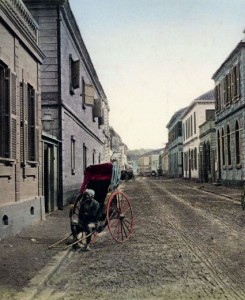 Ce colloque international sera l’occasion d’examiner la question des échanges opérés dans le domaine architectural entre Europe et Extrême-Orient au cours de la période 1550-1950. A priori, on peut supposer que, s’agissant de deux mondes éloignés et entrés tardivement en contact direct et régulier, l’identification de ce qui est échangé devrait s’en trouver facilitée. Pourtant, s’il semble évident de reconnaître une forteresse néerlandaise en Indonésie, des églises jésuites en Chine, une pagode chinoise en Angleterre, ou un pavillon de thé japonais en France, il est difficile d’appréhender chaque fois et d’analyser ce qui s’est passé, ce qui a été transmis ou emprunté, et comment cet échange a pu se . . . → En lire plus Ce colloque international sera l’occasion d’examiner la question des échanges opérés dans le domaine architectural entre Europe et Extrême-Orient au cours de la période 1550-1950. A priori, on peut supposer que, s’agissant de deux mondes éloignés et entrés tardivement en contact direct et régulier, l’identification de ce qui est échangé devrait s’en trouver facilitée. Pourtant, s’il semble évident de reconnaître une forteresse néerlandaise en Indonésie, des églises jésuites en Chine, une pagode chinoise en Angleterre, ou un pavillon de thé japonais en France, il est difficile d’appréhender chaque fois et d’analyser ce qui s’est passé, ce qui a été transmis ou emprunté, et comment cet échange a pu se . . . → En lire plus
Posté par Pascale Dubus, le 23 janvier 2013;
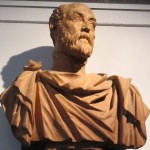 An international group of Research Master and PhD students will examine the concept of ‘self-presentation’. The symposium is intended to provide a platform for young researchers to examine, discus and criticize the relevance of this topic within the current art historical field. An international group of Research Master and PhD students will examine the concept of ‘self-presentation’. The symposium is intended to provide a platform for young researchers to examine, discus and criticize the relevance of this topic within the current art historical field.
Friday February 8th.
Location : Oude boteringestraat 34, Groningen
10.00 Incoming
10.30 Welcome
11.00 The creation of the last Renaissance pope : Julius III and his Villa Giulia in sixteenth century Rome Julia Dijkstra (University of Groningen)
11.30 Antonius Triest, 17th century Flemish bishop and maecenas. A case of deliberate self-presentation? Jacolien Wubs (University of Groningen)
12.00 Nicolaas Beaujon (1718 – 1786): banker, patron, collector. Noortje Knol (University . . . → En lire plus
Posté par Damien Bril, le 17 janvier 2013;
- Date limite : 25 janvier 2013
- Date et lieu du colloque : 15-16 mars 2013, Prague
The European Way – Identitarian Representations of Europe in Visual Arts, Performing Arts and Literature
Prague, Czech Republic, March 15 – 16, 2013 Deadline-CFP: 25 janv. 2013
As part of the Third Euroacademia Global Conference ‘Europe Inside-Out. Europe and Europeaness Exposed to Plural Observers’ to be held at Grand Majestic Plaza in Prague, Czech Republic  In contemporary Europe some of the main indicators of the lack of a unitary identity come from the deficit of symbols, images, artistic representations or literary writings that would pin-point towards a unity of sensibility and of artistic perception. Europe appears through visual representations as a divided continent coming from an extremely diverse universe of imaginary . . . → En lire plus In contemporary Europe some of the main indicators of the lack of a unitary identity come from the deficit of symbols, images, artistic representations or literary writings that would pin-point towards a unity of sensibility and of artistic perception. Europe appears through visual representations as a divided continent coming from an extremely diverse universe of imaginary . . . → En lire plus
Posté par Christian Omodeo, le 15 janvier 2013;
- Date limite : 28 février 2013, 28 février 2013
 Le Département d’histoire de l’art et de musicologie de l’Université de Genève met au concours un poste à charge partielle (10%) de chargé/e de cours en histoire de la photographie. Le Département d’histoire de l’art et de musicologie de l’Université de Genève met au concours un poste à charge partielle (10%) de chargé/e de cours en histoire de la photographie.
Date limite : 28 février 2013
Titres exigés et expérience professionnelle :
Le/la candidat-e doit être titulaire d’un doctorat ou d’un titre équivalent, avec une spécialisation dans le domaine de l’histoire de la photographie. Il-elle doit avoir une expérience de l’enseignement universitaire et une bonne maîtrise orale et écrite de la langue française.
Cahier des charges :
Il s’agit d’un poste à 10% correspondant à une heure hebdomadaire d’enseignement et suppose un engagement actif dans la recherche, ainsi . . . → En lire plus
Posté par Marine Schütz, le 16 décembre 2012;
- Date limite : 15 février 2013, 15 février 2013
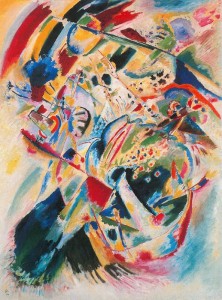 1914 : guerre et avant-gardes 1914 : guerre et avant-gardes
1914 : War and the Avant-Gardes
A l’occasion de ce colloque interdisciplinaire, on interrogera les relations complexes entre les arts visuels, au sens le plus large, et l’histoire, dans un moment où la crise de la conscience européenne se cristallise en catastrophe radicale. En s’en tenant strictement à une tranche temporelle précise, entre le 1er janvier et le 31 décembre 1914, il s’agira de penser la situation intellectuelle et pratique de la création visuelle pendant les six premiers mois « ordinaires » de l’année, et de comprendre aussi précisément que possible la nature des prises de conscience provoquées par l’événement de la guerre ainsi . . . → En lire plus
|
Équipe Rédacteur en chef : Olivier Bonfait.
Rédacteurs : Elliot Adam (Moyen Age) ; Nicolas Ballet (XX-XXIe siècles) ; Matthieu Fantoni (musées) ; Antonella Fenech Kroke (bourses) ; Vladimir Nestorov (Lettre mensuelle)
Administrateur web : Matthieu Lett.
ancien éditeur : Pascale Dubus
anciens rédacteurs : Gautier Anceau, Sébastien Bontemps, Damien Bril ; Sébastien Chauffour ; Ludovic Jouvet ; Aude Prigot
|
 For Renaissance Europeans, animal fur was a desirable but complex material. It was a high status commodity, lining (or appearing to line) fine garments. Yet it was also an animal skin, as worn by Adam and Eve after the Fall.The lack or presence of fur, some fifteenth-century humanists claimed, was a key marker of difference between animals and humans. Fur was at once civilised and wild.
For Renaissance Europeans, animal fur was a desirable but complex material. It was a high status commodity, lining (or appearing to line) fine garments. Yet it was also an animal skin, as worn by Adam and Eve after the Fall.The lack or presence of fur, some fifteenth-century humanists claimed, was a key marker of difference between animals and humans. Fur was at once civilised and wild.

















